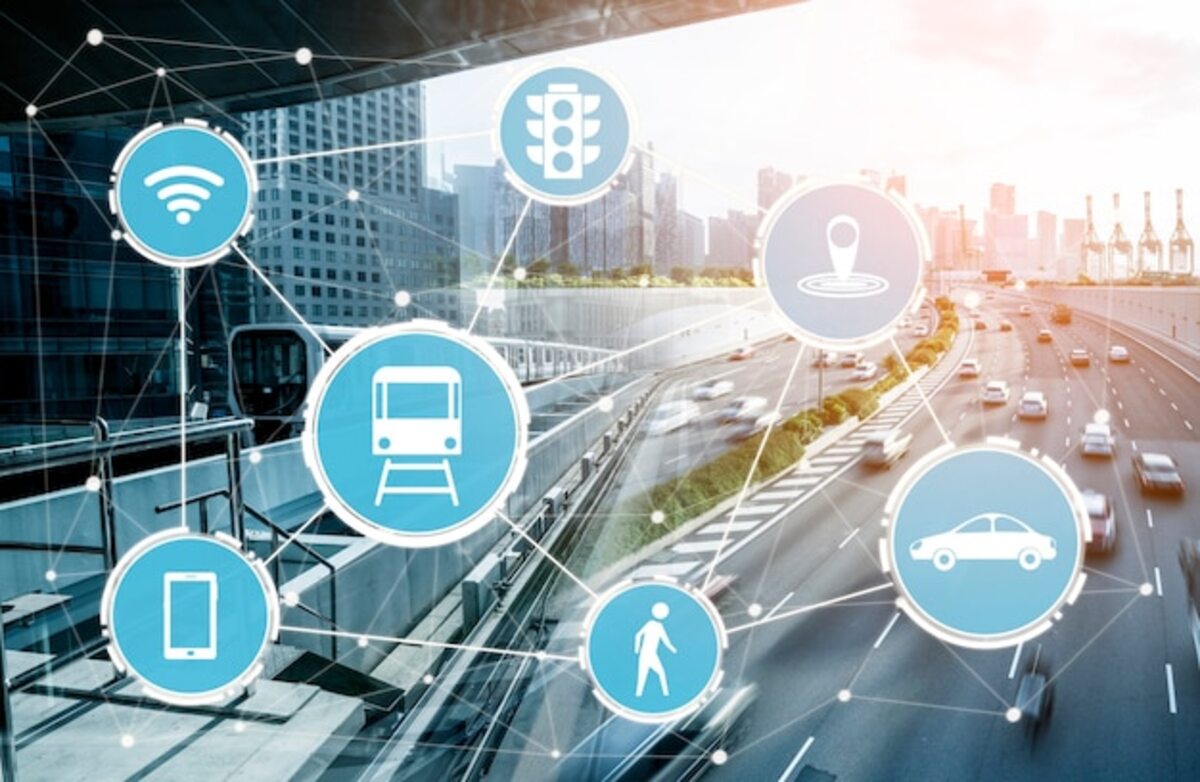Connectivity and its Effect on Location Attractiveness

Connectivity has become a crucial factor when assessing the attractiveness of a location. In an increasingly interconnected world, ease of access to services, transportation, and technology not only improves quality of life but also boosts property values. This article will explore how connectivity influences appreciation and why it is essential to consider this aspect when investing in real estate.
The importance of road infrastructure in connectivity.
Road infrastructure plays a fundamental role in the connectivity of any area, as it determines the ease with which people move and access different services. A well-developed road system not only allows for efficient mobility but also facilitates the transportation of goods, connecting businesses with their markets and thereby optimizing commercial operations. This type of access is especially crucial for growing cities, where adequate infrastructure can attract new investments and foster economic development. A location with good communication routes becomes a magnet for businesses and residents alike, enhancing its overall appeal.
Moreover, an efficient road network has a direct impact on the quality of life of residents. The ability to travel quickly to workplaces, schools, or recreational centers reduces time lost in long commutes and improves personal satisfaction. Well-connected communities often provide better job opportunities and access to essential services such as healthcare, education, and leisure. All of this contributes to creating a more dynamic and desirable living environment, which in turn elevates property values in those areas. Therefore, when considering real estate investment, it is vital to evaluate not only the property itself but also how the road infrastructure affects its connectivity and overall appeal.
2. Digital connectivity: the new standard for evaluating locations.
Digital connectivity has become a fundamental criterion for assessing the attractiveness of a location, as the ability to access high-speed Internet and reliable mobile networks is essential in modern life. People seek places where they can work from home, study online, or enjoy digital entertainment without interruptions. Therefore, properties located in areas with good connectivity are not only more desirable for buyers and renters but also tend to maintain their value in the long term. Digital infrastructure has become a key indicator of quality of life, directly impacting the overall appeal of an area.
Additionally, digital connectivity fosters local economic development by enabling businesses and entrepreneurs to access global markets. The presence of robust digital services can attract startups and innovative businesses, creating a vibrant ecosystem that benefits not only residents but also investors. In this regard, those considering investing in real estate should take into account how connectivity influences not only the current lifestyle of its inhabitants but also the potential economic growth and future development of the area. Thus, a location with excellent digital connectivity becomes a valuable asset for both living and investing.
3. Impact of public transportation on real estate value.
Public transportation plays a fundamental role in the real estate value of a location. When a property is located near subway stations, bus stops, or trams, its appeal increases significantly. This is because potential buyers and renters value the convenience and time savings that come with access to these modes of transport. The ease of commuting to work, schools, and other key areas not only improves the quality of life but also reduces dependence on cars, which is an increasingly important factor in housing decisions.
In addition to the immediate impact on property demand, proximity to public transport can also influence future projections of real estate value. Areas that are well-connected tend to experience more dynamic and sustained urban development, often resulting in a continuous increase in property prices. Investments in transport infrastructure usually attract new businesses and services, creating a positive cycle where the property's value increases as connectivity improves. Therefore, when considering an investment in real estate, it is crucial to evaluate not only the current state of public transport but also its future potential and how this may affect long-term property appreciation.
4. Urban projects and their effect on accessibility.
Urban projects play a fundamental role in shaping accessibility within a community. Proper planning of infrastructure, such as streets, bike lanes, and public transport, can significantly improve the mobility of residents and facilitate access to essential services like schools, hospitals, and shops. By implementing projects that prioritize connectivity, physical barriers that often limit movement can be removed, creating a more inclusive and attractive environment to live in. This not only benefits current residents but also attracts new residents and investors seeking locations with a high quality of life.
In addition, the integration of green spaces and recreational areas in these urban projects helps to foster a sense of community and well-being. By designing cities with a focus on human beings, a culture of walkability and sustainable transportation is promoted; this is essential to ensure that all citizens can fully enjoy the urban environment. Well-executed projects not only increase physical accessibility but also create a dynamic social atmosphere where community interactions thrive. Thus, by strengthening connectivity through appropriate urban initiatives, the attractiveness of a location for both living and investing is enhanced.
5. Commercial areas and their relationship with connectivity.
Commercial areas play a fundamental role in the connectivity of a location, as they act as hubs where both public transportation and vehicular routes converge. Proximity to shopping centers, markets, and entertainment areas not only facilitates access to products and services but also increases the influx of people, boosting local economic activity. This interconnection between commerce and transportation creates an ecosystem where residents enjoy a higher quality of life by having everything they need within reach. Additionally, investments in commercial infrastructure often attract more businesses and improve the services available in the area.
The relationship between commercial areas and connectivity also has direct implications on property value. Properties located near well-connected commercial areas tend to maintain or increase their value due to the constant demand from buyers and renters. Families look for places where they can easily access shops, schools, and recreational options without the need for long commutes. On the other hand, businesses benefit from establishing themselves in these strategic areas, which fosters an environment conducive to economic growth. In this sense, considering connectivity when evaluating properties in commercial areas is crucial to ensuring a solid and sustainable investment over time.
6. Environmental effects of good urban connectivity.
One of the most significant effects of good urban connectivity is the reduction of the environmental footprint. When cities are well connected, public transport usage is facilitated and sustainable alternatives like biking or walking are promoted. This not only decreases reliance on cars but also contributes to lower emissions of pollutants. Areas with adequate public transport infrastructure tend to see an increase in its use, resulting in cleaner air and a healthier urban environment for their residents. Additionally, by reducing travel times, the overall energy consumption of a city is optimized.
Another important effect is the promotion of green and community spaces. Good connectivity allows people to easily access parks, squares, and other recreational areas without the need to resort to the use of private vehicles. This not only encourages an active and healthy lifestyle but also improves social cohesion by facilitating encounters between neighbors and promoting community activities. Furthermore, greater accessibility to these natural spaces can elevate the aesthetic and economic value of surrounding properties, making these areas even more attractive to potential buyers and tenants, thus creating a positive cycle for sustainable urban development.
7. The role of emerging technologies in local connectivity.
Emerging technologies are redefining the way we connect, both personally and professionally. With the arrival of solutions like the Internet of Things (IoT), 5G, and mesh networks, communities can enjoy more robust and efficient connectivity. These innovations not only facilitate internet access but also enable an agile exchange of information between devices, thereby improving service quality in critical areas such as health, education, and transportation. In this sense, locations that leverage these emerging technologies become more attractive to potential buyers and investors.
Furthermore, the implementation of advanced technologies can enhance urban development and enable a more efficient management of local resources. For example, smart cities that integrate optimized public transportation systems and interconnected public services provide a much smoother experience for their residents. This not only contributes to improving the quality of life but also creates an ecosystem where businesses can thrive due to their ability to attract talent and foster innovation. At the end of the day, those localities that adopt these emerging technologies position themselves favorably in the real estate market by offering a modern and connected lifestyle.
8. Strategies to improve connectivity in existing communities.
To improve connectivity in existing communities, it is essential to implement a comprehensive approach that considers both physical infrastructure and technological solutions. Local authorities can initiate assessments of the current transportation network to identify areas for improvement, such as expanding bus routes or creating safe bike lanes. Additionally, promoting the use of shared transportation and alternative mobility services can alleviate congestion and increase access to various areas. Partnering with technology companies to incorporate smart systems in traffic and public transportation can also optimize commutes, making communities more attractive to residents and visitors.
Another key aspect is involving residents in the planning process. Creating community forums where their needs and concerns are heard can generate tailored solutions that reflect local priorities. Initiatives like free Wi-Fi connectivity programs in public spaces not only improve internet access but also foster a sense of community by facilitating social interactions and cultural activities. Implementing these strategies will not only enhance the quality of life in communities but also increase their appeal to potential buyers and real estate investors.



